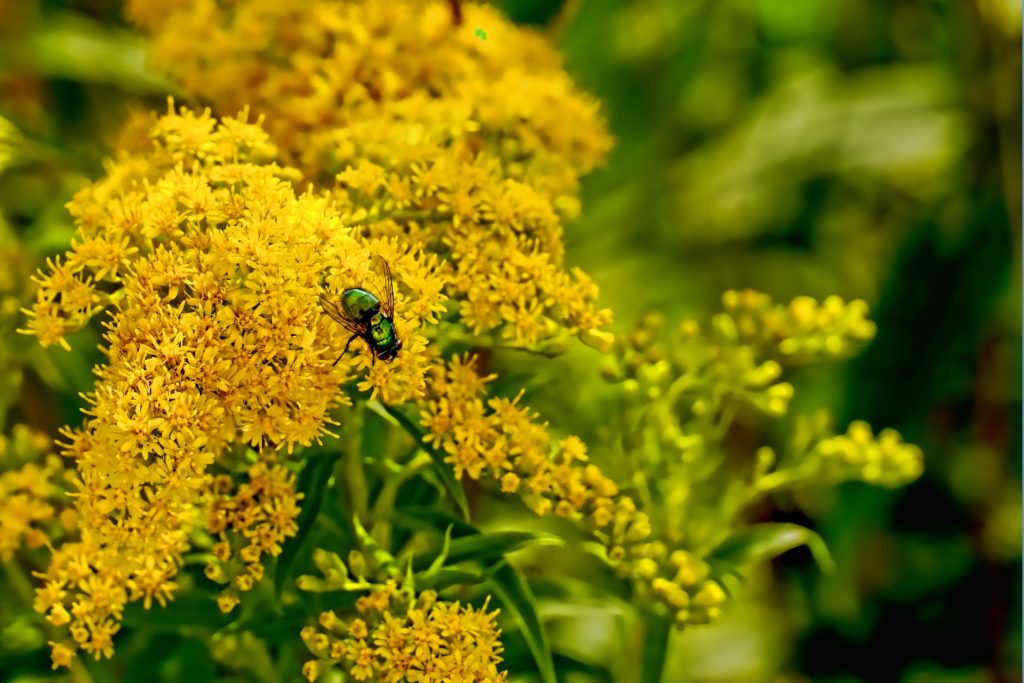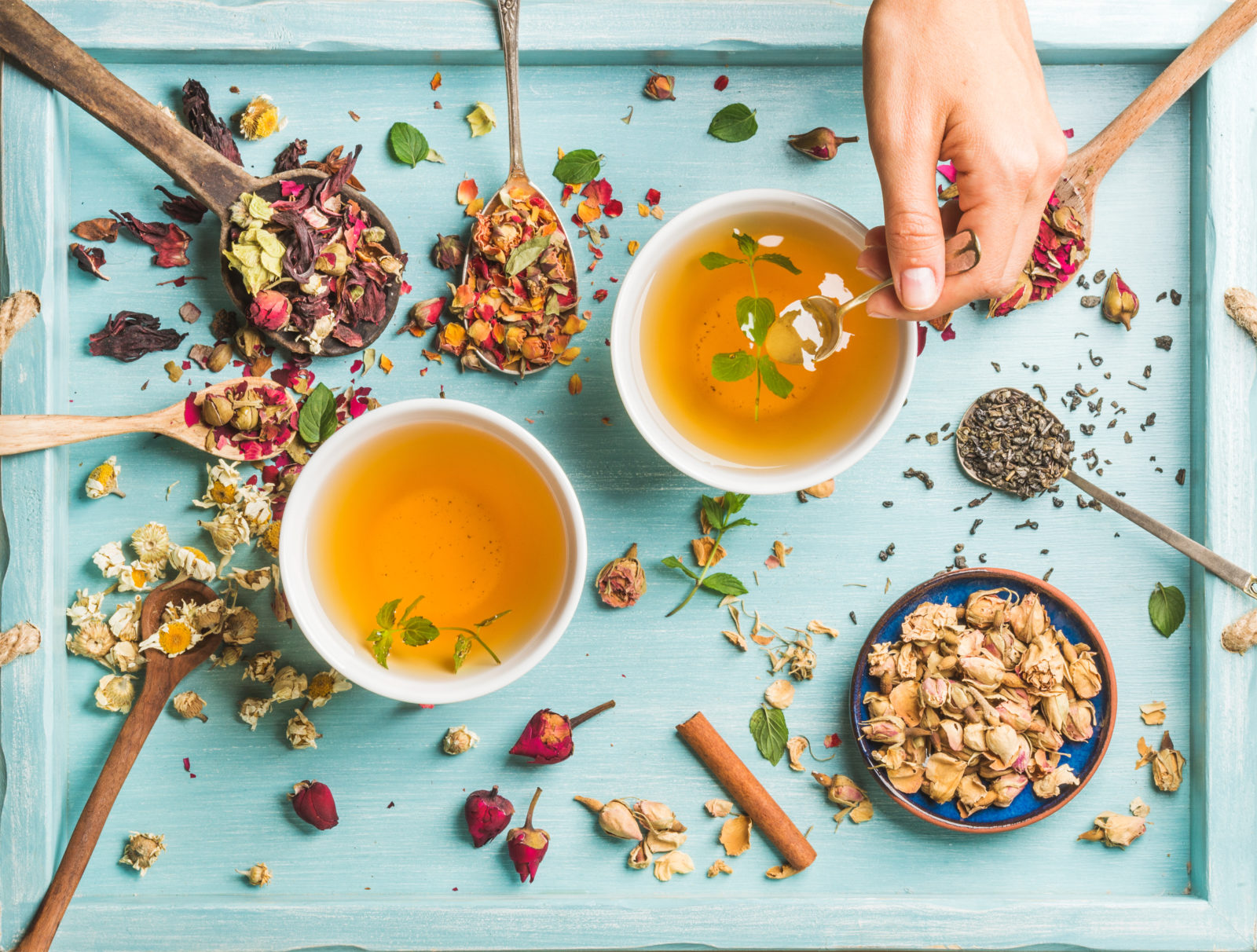Cough and colds are inconvenient. When our immune system is not functioning to par, when we are dealing with a great deal of stress or consuming a poor diet we increase our susceptibility to both. However, there are many herbal remedies to reduce the onset of coughs and colds as well as using them as supplementary measures when a cough or cold develops.
Herbs for Coughs
Coughs are common occurrences, a result of viral upper respiratory tract infections. Severe or prolonged cough lasting longer than 8 weeks may need medical attention, whereas acute coughs which last for 3 weeks or less can, for the most part, be treated at home (Dicipinigaitis, P.V., 2015).
There are certain herbs, particularly those that work on the respiratory system that can be taken as a tea or tincture to soothe a sore throat and eliminate a cough. Adding in a tsp of local honey, perhaps with some added royal jelly or propolis can provide added soothing benefits and further reduce irritation to the throat.
Licorice
Licorice root tea for sore throats and coughs. This herb has several properties that make it beneficial for combating acute and in some cases chronic coughs. The first is its actions as an expectorant, which allows it to reduce and eliminate mucus and phlegm buildup (Dastagir, G., et al., 2016). Another property is its demulcent action, which means that it is beneficial at soothing and relieving irritation and inflammation within the esophagus and duodenum. This action allows licorice to coat the tissue of the throat, easing it for a time after the herbal tea is taken.
How to Take
The dried root of the licorice plant is used as a tea. You can find licorice tea bags at health stores or at most grocery stores. When preparing a loose root tea use between 1/2 -1 tsp for 500 ml of water. Bring both to a boil, after which let it steep for ten minutes (Hoffman, D., 1990). It combines well with coltsfoot.

Coltsfoot
Coltsfoot has a long history of use for the treatment of coughs across Europe and Asia. Both the flower and leaves of this plant are used in tea to soothe an irritated throat. The properties in this herb that make it beneficial for coughs include its anti-tussive action – tussive the Latin word for cough (Shergis, J.L., et al., 2015) – along with its expectorant action. This herb aids in eliminating acute and chronic coughs, reducing mucus and phlegm (Chen, L., et al., 2019) build up as well as soothing inflammation. There is a decent amount of zinc present in this plant, which adds to its anti-inflammatory and immune-boosting potential.
How to Take
You can find coltsfoot loose leaf tea online, or you can buy some from a herbalist. Steep 1-2 tsp of coltsfoot tea with 500 ml of water for 10 minutes. Make sure to cover the top of the cup to ensure that when it is time to drink the tea it is still quite hot.
Herbs for Colds
Common colds can be infrequent, it involves an infection of the upper respiratory area and is often a result of rhinovirus infection. Corticosteroids are often used in the treatment of colds, due to their ability to reduce inflammation and the infection. There are however some herbal remedies that can aid in preventing the onset of common colds, as well as a reduction in its symptoms.

Goldenrod
Goldenrod’s areal parts are used in the treatment of upper respiratory illnesses and the common cold. It is effective for calming sore throats and coughs (Minciullo, P.L., et al., 2017). Its properties include anti-inflammatory actions, expectorant actions which benefit the elimination of phlegm and mucus (Hurst, K., 2015).
How to Take
Steep 2 tsp of dried loose leaf goldenrod in hot water for 10 minutes. Goldenrod loose leaf can be purchased at a health food store or online.

Elderberry
The elder tree contains elderberries which are used in the treatment of colds, as well as an anti-inflammatory agent. They are rich in vitamin C, vitamin E, and vitamin A which all provide a beneficial antioxidant kick and a necessary immune system boost (Tester, J., 2015). Elderberries decrease the duration of colds and improve both physical and mental wellbeing (Tiralongo, E., et al., 2016). A 2019 study found that elderberry reduced symptoms of the influenza virus as well as reducing common cold symptoms of the respiratory tract, though to a lesser degree. Elderberry tea or syrup is safe when produced properly, it should never be consumed raw as it will result in poisoning. Heat must always be provided for the evaporation of all harmful compounds present in the raw berries (Hawkins, J., et al, 2019).
How to Take
You can buy elderberry syrup at a health food store, take as directed. You can always add one tsp to a cup of hot water. Make sure to consult with a herbalist or physician to make sure this supplement is right for you.
Herbs that work for both Cough and Colds
There are numerous herbs that can work for various ailments, the bottom two, garlic and echinacea are examples of herbal remedies that work for both cough and colds.

Garlic
Garlic has a long history of being used for its medicinal properties. During the middle ages, its medicinal uses grew with the help of Arabic physicians and it was used as an antibiotic during WWI. Today we know it to have potent antimicrobial, antibacterial and antifungal benefits, making it beneficial not only against the common cold but also for coughs. It has been shown to be effective against many gram-negative and positive bacteria such as salmonella and vibrio (Hussein, H.J., et al., 2017).
Please note that eating an excessive amount of garlic can affect iodine uptake which can therefore be an issue for individuals with thyroid issues. Garlic is also a blood thinner, speak to your doctor if you are taking fish oil or are on baby aspirin, or other blood-thinning medication before consuming excessive amounts of garlic.
How to Take
You can make a hot or warm drink of garlic juice with a bit of honey, however taking 1-2 cloves of raw garlic daily in food, such as in a salad can be very beneficial at boosting the immune system.

Echinacea
This beautiful herb is often a decorative flower in gardens, known commonly as a coneflower. It is a wonderful herb for colds as well as coughs. Its mechanism of action increases white blood cells and boosts the immune defense of the sick individuals, however, it does take a few days to feel the response. If you are taking it for a prolonged period of time, it is good to take a break for a while and start it again, this will ensure the best results. A study in 2015 looking at echinaceas antitussive or anti-cough properties found that it was as effective at eliminating a cough as the narcotic drug codeine (Capek., P., et al., 2015).
The flower and the root of the herb are used in the making of tea, and they work well at eliminating microbial infections as provided by echinacea’s main antimicrobial action. Echinacea is particularly effective for infections that affect the respiratory tract and sinuses (Hoffmann, D., 1990).
Echinacea has been shown to shorten the duration of colds (Karsch-Volk, M., et al., 2015) (Ross, S.M., 2016), however, its main benefit is in the prevention of the common cold. Echinacea tea can be taken at any time as a preventative or by someone who gets sick often. It is safe for the elderly and children (Rondanelli, M., et al., 2018). In some rare cases, it can give a negative response to those with autoimmune diseases, therefore it is always important to consult with your physician or health care provider before incorporating a new herb or supplement into your diet.
How to Take
Use 1-2 tsp of the root or flower of echinacea with 500 ml of water, bring to a gentle boil and let it steep for 10 minutes. You can also get tea bags of echinacea at your local health food store or grocer, they sometimes include other herbs such as elderberry or licorice.
Please Note: if you are taking medication you should speak with your physician, health practitioner, or herbalist to make sure there are no contraindications between the medication and the herbs above before using them in the treatment of a cough or cold.
References
Capek, P., Sutovska, M., Kocmalova, M., Franova, S., Pawlaczyk, L., Gancarz, R.(2015). Chemical and pharmacological profiles of Echinacea complex. International Journal of Biological Macromolecules. Volume 79, Pages 388-391.
Chen, L., Mulder, P.P.J., Pejinenburg, A., Rietjens, I.M.C.M. (2019). Risk assessment of intake of pyrrolizidine alkaloids from herbal teas and medicines following realistic exposure scenarios. Food and Chemical Toxicology. Volume 130, pages 142-153.
Dastagir, G., Rizvi, M.A. (2016). Glycyrrhiza glabra L. (Liquorice). Pakistan Journal of Pharmacological Science. Volume 29, Issue 5, pages 1727-1733.
Dicipinigaitis, P.V. (2015). Clinical perspective – cough: an unmet need. Current Opinion in Pharmacology. Volume 22, Pages 24-28.
Hawkins, J., Baker, C., Cherry, L., Dunne, E. (2019). Black elderberry (Sambucus nigra) supplementation effectively treats upper respiratory symptoms: A meta-analysis of randomized, controlled clinical trials. Complementary therapies in Medicine. Volume 42, pages 361-365.
Hoffman, D. (1990). Holistic Herbal. A Safe and Practical Guide to Making and Using Herbal Remedies. Thorsons; London.
Hurst, K. (2015). Hidden Natural Histories: Herbs. The University of Chicago Press: Chicago.
Hussein, H.J., Hameed, I.H., Hadi, M.Y. (2017). Review: Anti-microbial, Anti-inflammatory effects and Cardiovascular effects of Garlic: Allium satvium. Research Journal of Pharmacology and Technology. Volume 10, Issue 11.
Karsch-Volk, M., Barrett, B., Linde, K. (2015). Echinacea for Preventing and Treating the Common Cold. JAMA Clinical Evidence Synopsis. Volume 313, Issue 6, pages 618-619.
Minciullo, P.L., Calapai, G., Miroddi, M., Mannucci, C., Chinou, I., Gangemi, S., Schmidt, R.J. (2017). Contact dermatitis as an adverse reaction to some topical used European herbal medicinal products – part 4: Solidago virgaurea – Vitis vinifera. Contact Dermatitis. Volume 77, Issue 2
Petrovska, B. B., & Cekovska, S. (2010). Extracts from the history and medical properties of garlic. Pharmacognosy Reviews, 4(7), 106–110.
Rondanelli, M., Miccono, A., Lamburghini, S., Avanzato, I., Riva, A., Allergrini, P., Flaiva, M.A., Peroni, G., Nichetti, M., Perna, S. (2018). Self-Care for Common Colds: The Pivotal Role of Vitamin D, Vitamin C, Zinc, and Echinacea in Three Main Immune Interactive Clusters (Physical Barriers, Innate and Adaptive Immunity) Involved during an Episode of Common Colds – Practical Advice on Dosages and on the Time to take These Nutrients/Botanicals in order to prevent or Treat Common Colds. Evidence-Based Complementary and Alternative Medicine. Volume 2018, page 36.
Ross, S.M. (2016). Echinacea purpurea: A Proprietary Extract of Echinacea purpurea is Shown to be Safe and Effective in the Prevention of the Common Cold. Holistic Nursing Practice. Volume 30, Issue 1, pages 54-57.
Shergis, J.L., Wu, L., May, B.H., Zhang, A.L., Gua, X., Lu, C., Xue, C.C. (2015). Natural products for chronic cough: Text mining the East Asian historical literature for future therapeutics. Sage Journals. Volume 12, Issue 3, pages 204-11.
Tester, J. Elderberry in food – review of antioxidant and health benefits. Australian Journal of Herbal Medicine. Volume 27, Issue 2, pages 76.
Tiralongo, E., Wee, S.S., Lea, R.A. Elderberry Supplementation Reduces Cold Duration and Symptoms in Air-Travellers: A Randomized, Double-Blind Placebo-Controlled Clinical Trial. Nutrients. Volume 8, Issue 4, page 182.
Amanda Filipowicz is a certified nutritional practitioner (CNP) with a bachelor in environmental studies (BES) from York University. She also has certification in clinical detoxification, prenatal and postnatal care as well as nutrition for mental health. She has been working as a nutritionist since 2013 and is a lifelong proponent of eating healthy.

